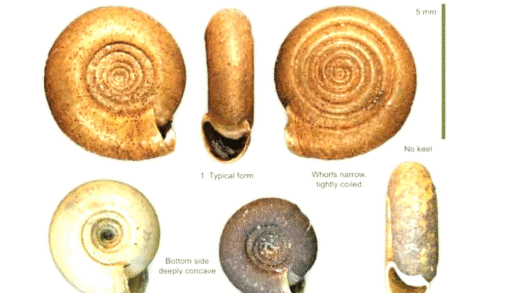Sahara Desert expansion is a pressing environmental issue influenced by climate change and human activities. This phenomenon affects local communities, ecosystems, and global weather patterns. Scientific methods like satellite imagery and soil sampling are used to measure desert spread. Solutions like reforestation and community engagement offer hope for reversing desertification. The Sahara’s rich history and ecological significance highlight the need for effective conservation strategies.
What’s Happening with the Sahara
Sahara Desert expansion is a significant environmental issue today. The Sahara, once a lush area, is experiencing rapid growth, leading to increased desertification. This change affects not only the landscape but also local communities and ecosystems. Over recent decades, satellite imagery and scientific studies have shown that the Sahara is expanding southward, consuming fertile land.
Current data indicates that the desert has grown by approximately 10% over the last 50 years. This expansion is alarming as it threatens agriculture, water sources, and biodiversity. Local farmers are facing challenges as their arable land decreases, forcing them to adapt or migrate. The effects of this desertification are profound, impacting food security and livelihoods.
Climate Change: The Big Player
Climate change is a crucial factor in the Sahara Desert expansion. Rising temperatures and altered precipitation patterns have created conditions favorable for desert growth. As global temperatures increase, evaporation rates rise, leading to drier soil and more intense droughts. These changes are pushing the boundaries of the Sahara further south.
Scientific studies reveal that increased greenhouse gas emissions contribute to this phenomenon. For instance, regions that once received reliable rainfall are now experiencing prolonged dry spells, causing vegetation to die off. This loss of plant life exacerbates soil erosion and desertification. It’s a vicious cycle: as vegetation disappears, the land becomes less capable of retaining moisture, further promoting desert conditions.
Human Footprint
Human activities significantly contribute to desertification in the Sahara. Deforestation, overgrazing, and unsustainable agricultural practices are leading to soil degradation. When trees are cut down, the protective cover over the soil is lost, making it more susceptible to erosion and desertification. Additionally, excessive livestock grazing strips the land of its vegetation, leaving it barren.
Moreover, urbanization and infrastructure development are expanding into previously fertile areas, furthering the Sahara’s reach. The demand for resources such as water and land is pushing communities to exploit the environment unsustainably. As a result, the balance of ecosystems is disrupted, leading to more severe desertification effects on communities and biodiversity.
Are Other Deserts Expanding Too?
Sahara Desert expansion is not an isolated phenomenon. Other deserts across the globe are also experiencing significant growth. For instance, the Gobi Desert in Asia is expanding due to similar factors like climate change and human activities. Reports suggest that desert areas in Australia and the southwestern United States are also seeing increased arid conditions.
In fact, the following deserts are noteworthy:
- Gobi Desert: Expanding primarily due to overgrazing and climate shifts.
- Atacama Desert: Facing a similar fate as rainfall patterns change.
- Great Sandy Desert: Growth linked to agricultural practices and climate variations.
This indicates a broader issue of desertification on a global scale. As deserts expand, they pose threats to agriculture, biodiversity, and water availability worldwide. Awareness and action are crucial for managing these ecological challenges effectively.
Ecological Fallout
The ecological impacts of expanding deserts, like the Sahara, are profound. As desertification progresses, nearby ecosystems face severe stress. The loss of plant cover leads to soil degradation, which in turn affects local wildlife. This creates a domino effect, altering habitats and threatening species that rely on those environments.
Key ecological consequences include:
- Loss of Biodiversity: Many plants and animals cannot adapt to rapid changes, leading to extinction.
- Soil Erosion: Without vegetation, soil is more vulnerable to wind and water erosion.
- Altered Water Cycles: Desertification disrupts local rainfall patterns, impacting both human and animal populations.
These changes highlight the need for immediate action to reverse desertification trends. Protecting existing ecosystems and restoring degraded lands is vital to maintaining ecological balance.
Communities at Risk
Desertification severely affects local communities, particularly those relying on agriculture. As the Sahara expands, traditional farming lands shrink, forcing families to adapt or relocate. This leads to economic hardships and food insecurity, as less arable land means lower crop yields.
The impact on communities can be outlined as follows:
- Migration: Many people are forced to leave their homes in search of better living conditions.
- Food Insecurity: A decrease in agricultural output leads to higher food prices and malnutrition.
- Cultural Loss: Traditional lifestyles and cultural practices are threatened as communities are uprooted.
Addressing these issues requires collaborative efforts from governments and organizations to provide support and sustainable solutions for affected populations.
Measuring the Spread
Sahara Desert expansion is closely monitored using various scientific methods. Researchers employ satellite imagery, ground-based measurements, and climate models to track changes in the desert’s boundaries. Satellite images provide a broad view, allowing scientists to observe large-scale alterations over time, while ground measurements offer detailed insights into soil conditions and vegetation cover.
Key methods include:
- Remote Sensing: Satellites capture images that reveal shifts in land use and vegetation. This technique allows for the analysis of desert expansion patterns over decades.
- GIS (Geographic Information Systems): GIS technology helps map desert boundaries and analyze spatial data, providing insights into the rate of expansion.
- Soil Sampling: Scientists collect soil samples to assess moisture levels and erosion rates, helping to understand how desertification affects soil health.
- Climate Models: These models simulate future climate scenarios, predicting how changes in temperature and precipitation may influence desert growth.
By combining these methods, researchers can effectively measure the spread of the Sahara and develop strategies to combat desertification.
Can We Turn Back Time?
Reversing desertification, particularly in the Sahara, is a daunting challenge but not impossible. Innovative solutions have emerged that focus on restoring vegetation, improving soil health, and adopting sustainable land management practices.
Some promising strategies include:
- Reforestation: Planting trees and restoring native vegetation helps stabilize soil and restore ecosystems.
- Agroforestry: Combining agriculture with tree planting can enhance soil fertility and reduce erosion.
- Water Conservation: Implementing techniques like rainwater harvesting can improve water availability for both crops and communities.
- Community Engagement: Involving local communities in conservation efforts ensures that solutions are sustainable and culturally appropriate.
These methods, along with international cooperation and funding, can help slow down or even reverse desertification trends in the Sahara.
Fun Facts about the Sahara
The Sahara Desert is not just vast; it is rich in history and diversity. Did you know it is the largest hot desert in the world, covering over 9 million square kilometers? This area is home to unique wildlife, including the Saharan silver antelope and various reptiles.
Here are some engaging facts:
- Ancient Civilization: The Sahara was once a fertile region with thriving communities. Artifacts show it was home to early humans who engaged in agriculture.
- Climate Shifts: Historical records indicate that the Sahara has undergone dramatic climate changes, shifting between green and arid phases.
- Sand Dunes: The Sahara is famous for its stunning sand dunes, some reaching heights of up to 250 meters.
These fascinating aspects of the Sahara remind us of the dynamic nature of our planet and the importance of preserving its ecosystems.
Deserts and Weather
Deserts, including the Sahara, play a significant role in global weather patterns. They influence atmospheric circulation and precipitation patterns, affecting climates far beyond their borders. The presence of vast desert regions can lead to the creation of high-pressure systems that impact rainfall distribution.
Key impacts include:
- Altered Rainfall Patterns: Deserts can cause changes in local and regional rainfall, leading to droughts in surrounding areas.
- Temperature Extremes: Deserts can contribute to extreme temperature variations, affecting agricultural practices and natural ecosystems.
- Dust Storms: Winds from deserts can carry dust over long distances, impacting air quality and weather systems in other regions.
Understanding these interactions is crucial for predicting weather changes and managing the impacts of desertification globally.





Comments are closed.